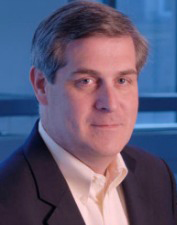Nano-Structured Metal Catalysts for High-Temperature Applications
Dr. John M. Vohs
Carl V. S. Patterson Professor of Chemical Engineering and Chair of the Department of Chemical and Biomolecular Engineering, University of Pennsylvania
3:30pm - March 24, 2016
CCIS L2-190
Abstract:
Supported metal catalysts are ubiquitous in the chemical process industries and controlling the size and shape of the metal nanoparticles is important in maintaining activity and selectivity for many reactions. Maintaining metal dispersion is particularly challenging for applications requiring high temperatures where sintering of the metal nanoparticles and loss of active surface area can lead to deactivation. We have been investigating a novel approach to addressing this problem in which supported metal nanoparticles are synthesized in situ via exsolution from a perovskite type oxide support under reducing conditions. This approach has been used in some formulations of automotive emissions control catalysts where the ability to re-dissolve and exsolve the metal via redox cycling is exploited to maintain metal particle size. While this phenomenon is well known, the mechanism by which the transition metal is exsolved from the oxide host is still poorly understood. The relationships between the exsolution process and the resulting structure of the metal nanoparticles are also not well understood. In this talk I will discuss our recent mechanistic studies of the exsolution process. In this work we have used well-defined model systems and detailed structural analysis using electron microscopy and atomic force microscopy to characterize the nucleation and exsolution of Ni particles from Ni-doped strontium titanate. These studies show how exsolution produces unique surface structures consisting of metal particles partially submerged in pits on the oxide surface. We have shown that this particle-in-a-pit morphology imparts unusually high thermal stability relative to metal nanoparticles deposited on the same support via conventional methods, making the exsolved nanoparticles highly resistant to deactivation via sintering. The effect of the particle-in-a-pit morphology on catalytic activity will also be discussed. In particular we will show that while the metal particles maintain their high activity for oxidation reactions, they have significantly decreased activity for the formation of filamentous carbon deposits when exposed to hydrocarbons under reducing conditions. Additional examples of the use of exsolution to produce electrode catalysts for solid oxide fuel cells will also be discussed.
